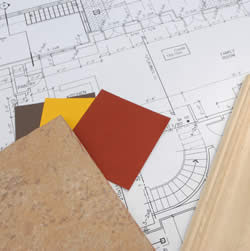Interior Design is a unique fusion of art, architecture and engineering. However, interior design involves more than just choosing furniture, fixtures and fabrics. As an interior designer you'll also need to know how to read architects blueprint, understand electrical codes and negotiate with contractors.
The designer is responsible for preparing specific interior construction designs to suit the clients taste and budget. They use computers to plan the layout and architectural details such as built in shelves, mounding, and cabinets. They also coordinate the design by choosing color palates, furniture, and window and floor treatments. Interior designers work in both residential and commercial settings, but many experienced designers specialize in particular settings, such as nightclubs and restaurants or historic renovation. Designers often join forces with architects, electricians, and contractors to make sure that their designs are not dangerous and meet construction codes and requirements.
A college-level education in interior design is essential to be a successful interior designer. Few clients would be willing to trust a designer who does not have formal training. A bachelor's degree is suggested for entry-level positions in interior design. Upon graduation, aspiring designers typically enter an apprenticeship to gain experience before taking a national licensing exam or joining a professional association.






.jpg)


.jpg)

















